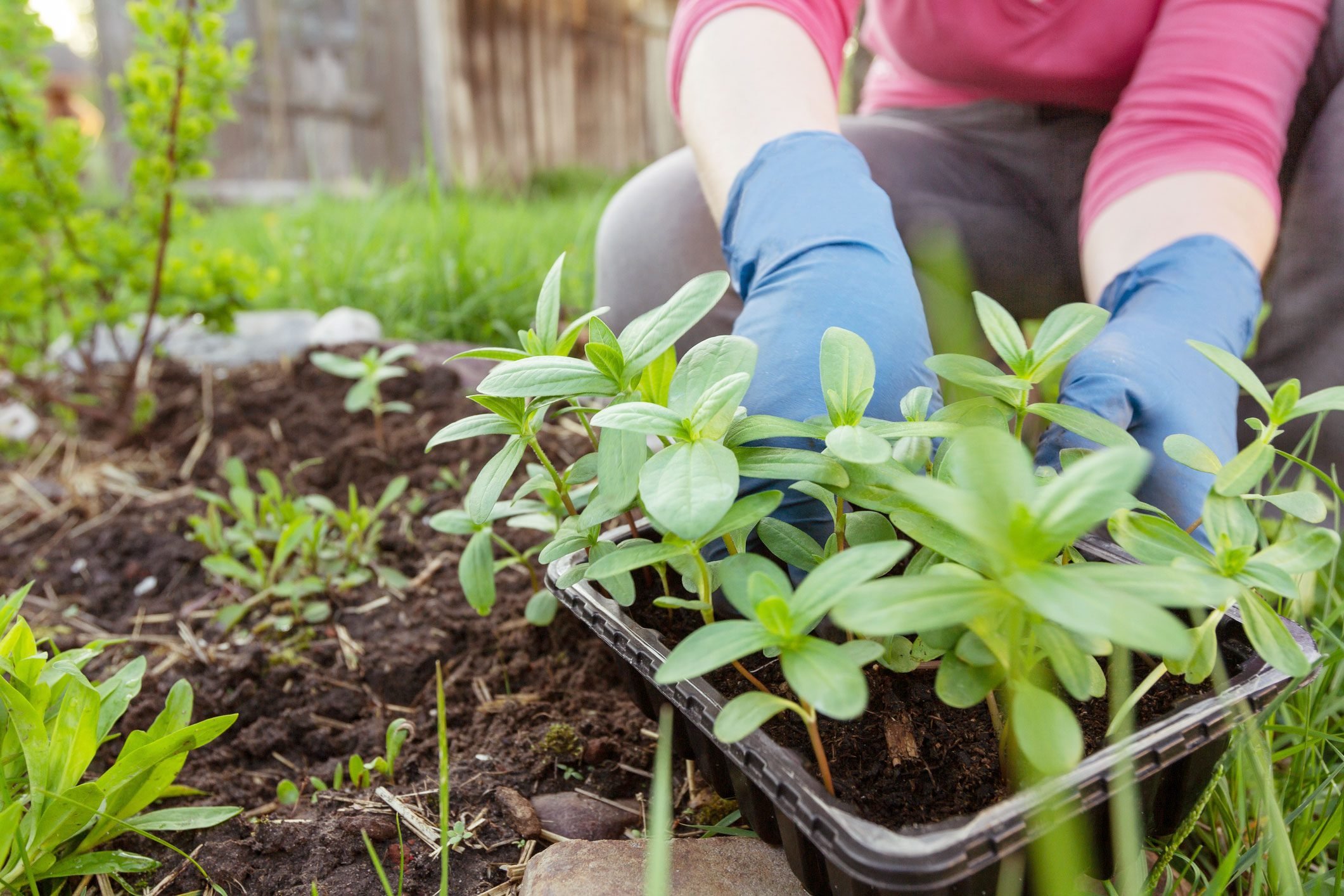Once you've planted your first flowers and watched them grow and bloom, you'll be confidently adding more flowers to your garden every year.

Gardening 101: How To Plant Flowers

Like many gardeners, I learned how to plant flowers at an early age. My dad let us pick out a few annuals each year. Then he would spade up a spot for them, hand us a trowel, and let us dig and plant.
Maybe he went back later when we were off playing and re-planted some of those flowers. All we knew was, they grew. And it was always a pretty spot in the garden.
If you’ve never planted flowers, don’t worry. Most plants are fairly forgiving. As long as the roots end up in the ground and you water them enough, those flowers will grow whether they were planted by a child, a first-time gardener or a pro.
Here’s how to plant flowers in your garden.
On This Page
Gather Gardening Tools
You’ll need a few basic tools. They include:
- A trowel to dig holes.
- A small hand cultivator for breaking up soil. These often come in sets of gardening tools. If you have a lot of ground to break up, you may need something more robust, like a digging fork.
- A watering can or, if there’s an outdoor faucet nearby, a garden hose with a sprayer.
- Gardening gloves. I sometimes wear disposable gloves if the flowers I’m planting don’t have thorns.
- Pruners, to cut off broken stems and remove spent flowers.
Prepare the Ground
Make sure the ground is ready for planting.
- Remove any weeds or grass that might compete with the flowers.
- Clear out stones or rocks.
- Cultivate the ground six inches deep so it’s loose and easy to dig in.
- If your ground seems dry and sandy, you may need to amend the soil by adding organic matter like mulch. Work it into the soil well.
If it hasn’t rained lately, wet the ground a bit. You want it to be moist but not sopping wet. Grab a clump of soil and squeeze it. If water comes out, that’s too much.
Set the Plants Where You’ll Plant Them
Before planting flowers, water them in their containers, then set them out to see how they look. It’s easier to move containers around than digging up and replant.
A few other tips include:
- Double-check the label to verify the height and spacing requirements. If it doesn’t include this information, you can find it online. Also verify the plant’s optimal growing conditions match where you want to put it.
- If your planting area can only be viewed from one side, position taller flowers in the back and smaller ones in the front.
- If your planting area is visible from all sides, plant taller flowers in the middle and surround them with shorter ones.
- Once you’ve arranged the flowers where you want them, leave them in place.
Dig and Plant
Finally, you’re ready to plant your flowers.
- Dig a hole about the same depth as the container the flower came in, and a little wider. Set the container in the hole to determine if it’s deep enough.
- Gently remove the plant from its container. For smaller containers, you can usually pinch the bottom to loosen the plant and slide it out. For larger ones, squeeze all sides, turn it upside down and gently tap the bottom. Note: Never pull a plant out by its stem.
- Handle seedlings gently. If you started the seedlings indoors, make sure you’ve hardened them off by placing them outside in a sheltered spot for a few hours at a time over several days. They you can plant them.
- Put the plant in the hole, backfill with the soil you dug out and gently tamp down the soil.
Water and Prune as Needed
Once you’ve planted all the flowers, grab a watering can or a hose with a nozzle. With the latter, choose the gentler shower or rain setting. Water the base of the plants to avoid flattening them.
Cut off any stems you may have broken, and any spent blooms. Then pinch out the buds of any flowers just forming. This will encourage the plant to grow more stems and eventually become bigger and stronger, with more blooms.
Cover the bare ground with mulch. This retains soil moisture and slows weed growth. Water throughout the season, as needed.
And now the best part — watch your plants grow and flower. Depending on what you planted, you may soon have a ready supply of cut flowers to enjoy indoors, or a big display to impress everyone who walks by your garden.




















